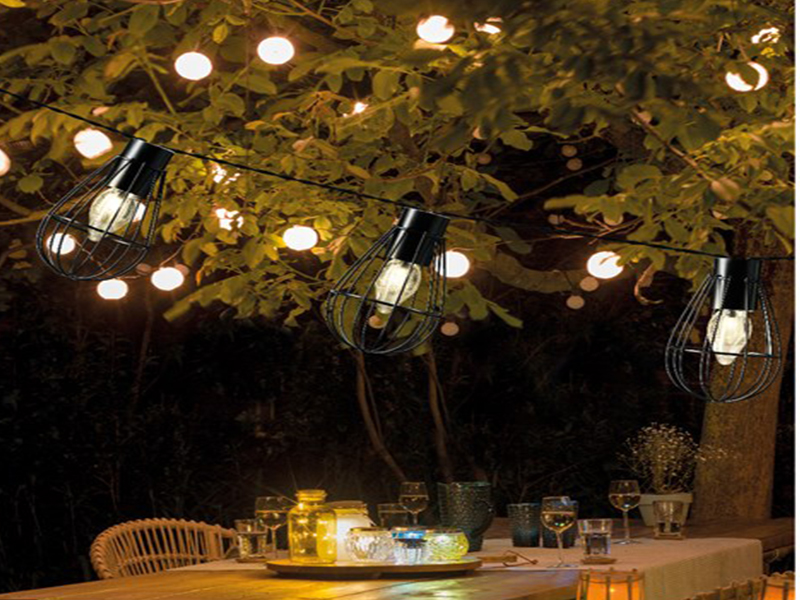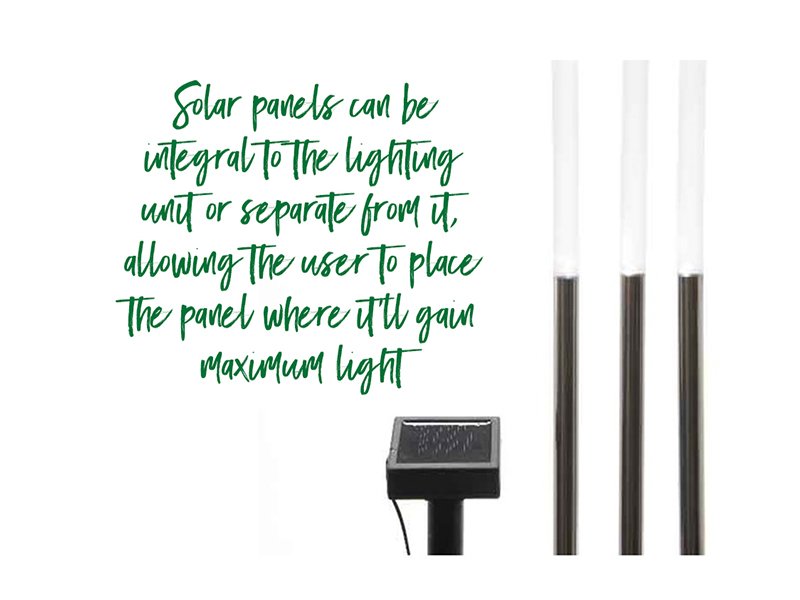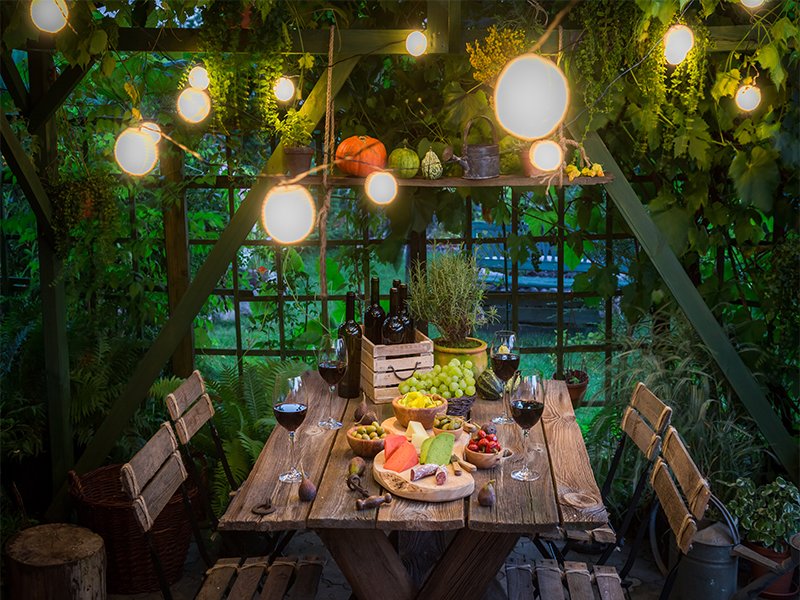Power - it's your choice!
The main choices to power your garden lighting are solar, battery, mains or a combination of solar and battery.
Below we've highlighted the pro's and con's of each power source to help you choose what's best for you and your garden. We've also explained a little about how solar lighting works and included some tips about how to make your garden lighting as delightful and effective as possible.
 Solar power has made garden lighting simple, safe and affordable, allowing us to illuminate our outdoors spaces and use the garden into the evening, even after sunset. With constantly evolving technology the lighting is becoming increasingly reliable and more powerful. Apart from zero running costs, the other great advantage of solar powered lighting is it's safety - particularly important if you have children and pets playing in the garden!
Solar power has made garden lighting simple, safe and affordable, allowing us to illuminate our outdoors spaces and use the garden into the evening, even after sunset. With constantly evolving technology the lighting is becoming increasingly reliable and more powerful. Apart from zero running costs, the other great advantage of solar powered lighting is it's safety - particularly important if you have children and pets playing in the garden!
Garden lighting powered by batteries is another option. With LED lighting, standard batteries will have a reasonable life-time. Many battery-powered lighting sets also have an integral timer, usually lighting for 6 hours and staying off for 18 hours. This is a common system for Christmas lights when solar power is more difficult to generate. Batteries on a set of LED lights with a timer will generally last at least a month.
Combination units offer another solution for those who want all year round lighting. In these systems the lighting defaults to battery power when when the light levels have been insufficient to generate solar power.
Mains powered garden lighting has the advantages of convenience and reliable levels of power. However, it must be installed by a qualified electrician and for safety reasons should be regularly maintained to ensure that there is no damage to the system. It is essential that only lighting recommended for outdoors is fitted.
Understanding solar
When choosing solar lighting, there are 4 main working components to consider, each of which will have an impact on the quality and durability of your product. There is a vast range of quality and price available on the market, and generally speaking, the more expensive the solar light you purchase, the better the quality will be, the light is likely to be brighter and your product will last longer.
If you're buying a solar light that you plan to keep for some time, do check if it's possible to replace parts as some of the less expensive products are sealed.

Solar panel - this is what converts sunlight into electrical charge. The panel can be integral to the lighting unit, or a separate unit that can be fixed in an optimum position away from the light itself.
To maximise efficiency, keep the panel clean and in clear sight of the sun's rays - it's so easy for them to get dusty and potentially overgrown in the garden, and that will inevitably impair its effectiveness.
Rechargeable batteries - the charge generated by the solar panel in the daylight is stored in the rechargeable batteries. All rechargeable batteries will fail over time so if your solar light isn't working properly, it's worth checking whether the batteries need to be changed.
Remove the batteries when storing the solar lights.
Controller - this component detects the light levels and activates the light when it becomes dark
LED unit - this is what we'd normally call the 'light bulb'. The unit of measurement - how bright the light will be - is measured in lumens. The higher the number of lumens, the brighter your light will be

Operating solar
At first - when you first get your lighting, leave the light in the OFF position for a couple of days. This allows the unit to build up a charge before you try to run the lights. If you don't build up a charge beforehand, there won't be enough power to run the lights!
In winter - in Scotland it's difficult to get your solar lighting to operate well all year round. Not only is there a shorter period of light to generate charge in winter, but as the period of darkness is longer, more charge is required to operate the lighting.
We recommend that lighting units - including the solar panel - are cleaned and stored over winter, remembering of course to remove the batteries before storing.
When you take out your lovely clean lighting units in the spring, don't forget to put the batteries back in and give the lights a couple of days in the OFF position to allow them to re-build some charge.

